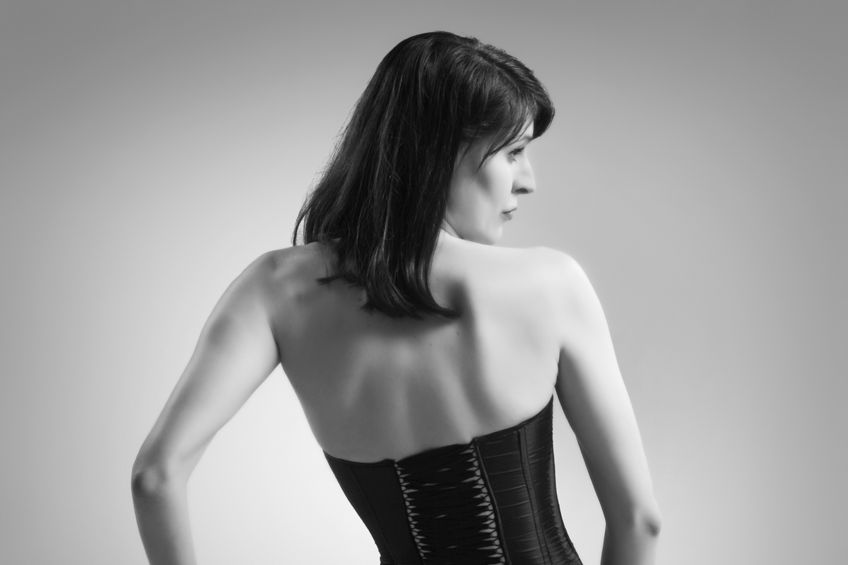Famous Nude Photographers – Nude Art Photography Explored
Nudity is one of the most explored themes in art history that has been featured in many paintings, sculptures, and photograph-based artworks for many centuries. While the use of nudity in fine art continues to be controversial due to its nature of mature content, it is still incredibly important in unpacking themes of sexuality, gender, beauty, and other multi-faceted concepts around nudity and our relationship to vulnerability. In this article, we will explore the top 21 most famous nude photographers of art history, whose controversial and inspiring approaches give one insight into the different ways in which one can critically examine nudity and its role in fine art.
Contents
- 1 The Value of Nude Photography
- 2 The Top 21 Most Famous Nude Photographers
- 2.1 Auguste Belloc (1805 – 1867)
- 2.2 Oscar Rejlander (1813 – 1875)
- 2.3 Edward Weston (1886 – 1958)
- 2.4 Sasha Stone (1895 – c. 1940)
- 2.5 William Mortensen (1897 – 1965)
- 2.6 Germaine Krull (1897 – 1985)
- 2.7 Ruth Bernhard (1905 – 2006)
- 2.8 Horst P. Horst (1906 – 1999)
- 2.9 Shōji Ueda (1913 – 2000)
- 2.10 Robert Heinecken (1931 – 2006)
- 2.11 Nobuyoshi Araki (1940 – Present)
- 2.12 Nan Goldin (1953 – Present)
- 2.13 Francesca Woodman (1958 – 1981)
- 2.14 Pascal Baetens (1963 – Present)
- 2.15 John Rankin (1966 – Present)
- 2.16 Spencer Tunick (1967 – Present)
- 2.17 Rebeca Saray (1983 – Present)
- 2.18 Sophie Harris-Taylor (1988 – Present)
- 2.19 Harley Weir (1988 – Present)
- 2.20 Dave Lucas (n.d. – Present)
- 2.21 Denisse Ariana Pérez (n.d. – Present)
- 3 Frequently Asked Questions
The Value of Nude Photography
What is the value of nudity in art? What makes nudity in art so controversial? And how can you develop an appreciation for nudity in art? These are just a few questions you might have when looking at nude artworks or nude photography that is often misunderstood as pornographic or inappropriate. While many consider nudity in fine art to be a controversial topic for discussion, it is also an important practice in art and photography that can be appreciated for its artistic value. Firstly, it is useful to identify and understand the reasons why nudity in art is considered controversial.
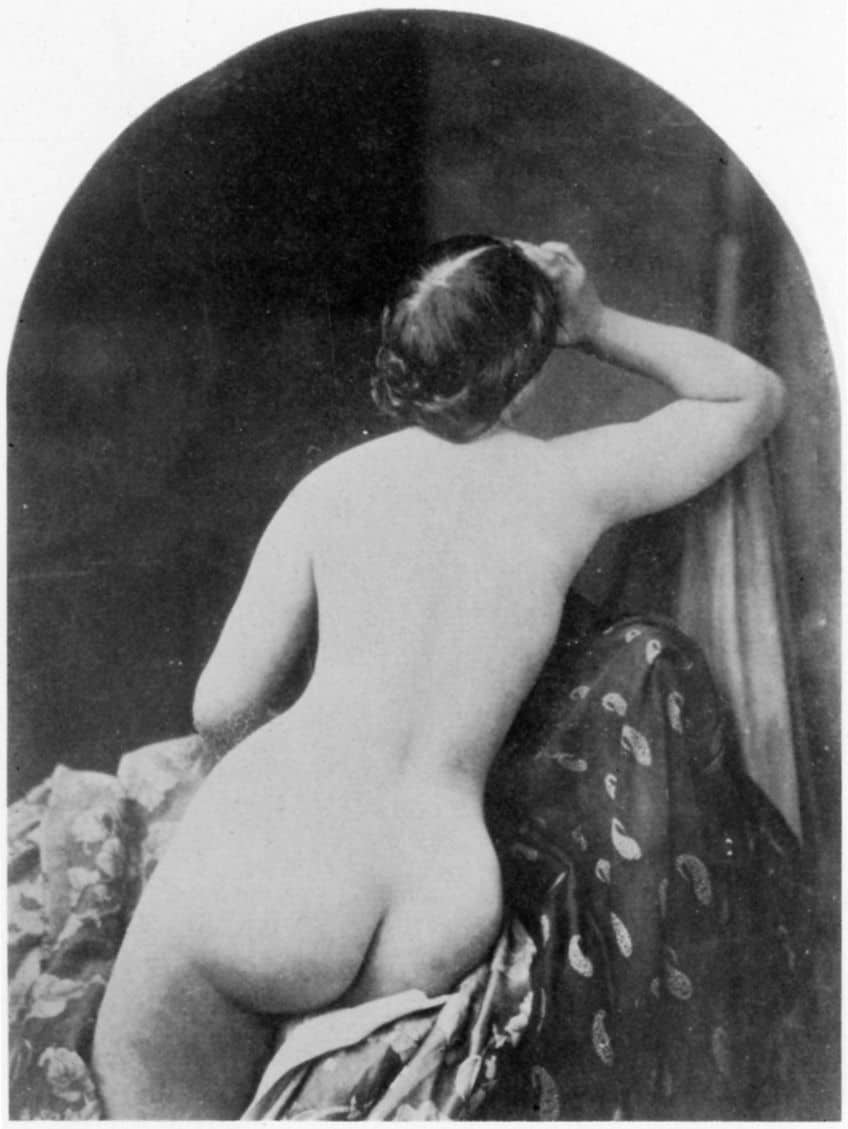
In art history, there has not been a movement or genre in art that has not come without controversy or significant resistance from society. In nude art, photography has been a useful Contemporary medium used to capture the naked human body and is often carefully combined with a variety of photographic techniques, including specific lighting, poses, techniques, and compositions, coupled with a variety of art styles, to relay certain messages about the human body. Keeping an open mind is one of the most important perspectives to have when it comes to looking at nude photography since there are many ways in which one can read an image. Images that are identified as controversial and contain nudity are mostly images that are produced by artists who glamorize the exotification or objectification of women. The majority of controversial nude photographers are often identified as male and even a few early female photographers who specialized in nude photography were also subjected to controversy.
This was due to the censorship and societal expectations set by early photography and fine art practitioners of the 19th century who saw nudity in art as taboo, inappropriate, and completely controversial. It was a dramatic time, was it not?
In nude art, photography offers much room for the exploration of themes such as sexuality, identity, gender, beauty, and other seemingly “controversial or provocative” themes that many people are often too scared to explore. Today, nude photography can be practiced in a variety of art styles that evoke an atmosphere of classical beauty, Romanticism, Eroticism, or even test a particular visual language such as abstract photography. Ultimately, the practice of nude photography is dependent on the preferences of the artist and the expression of character by the sitter.
The Top 21 Most Famous Nude Photographers
Below, we will look at the top 21 most famous nude photographers in art history who have tested the boundaries of nudity in art through stunning compositions and interesting approaches to sexuality, the body, eroticism, and the representation of “femmes, thems, and mascs” in nude photography.
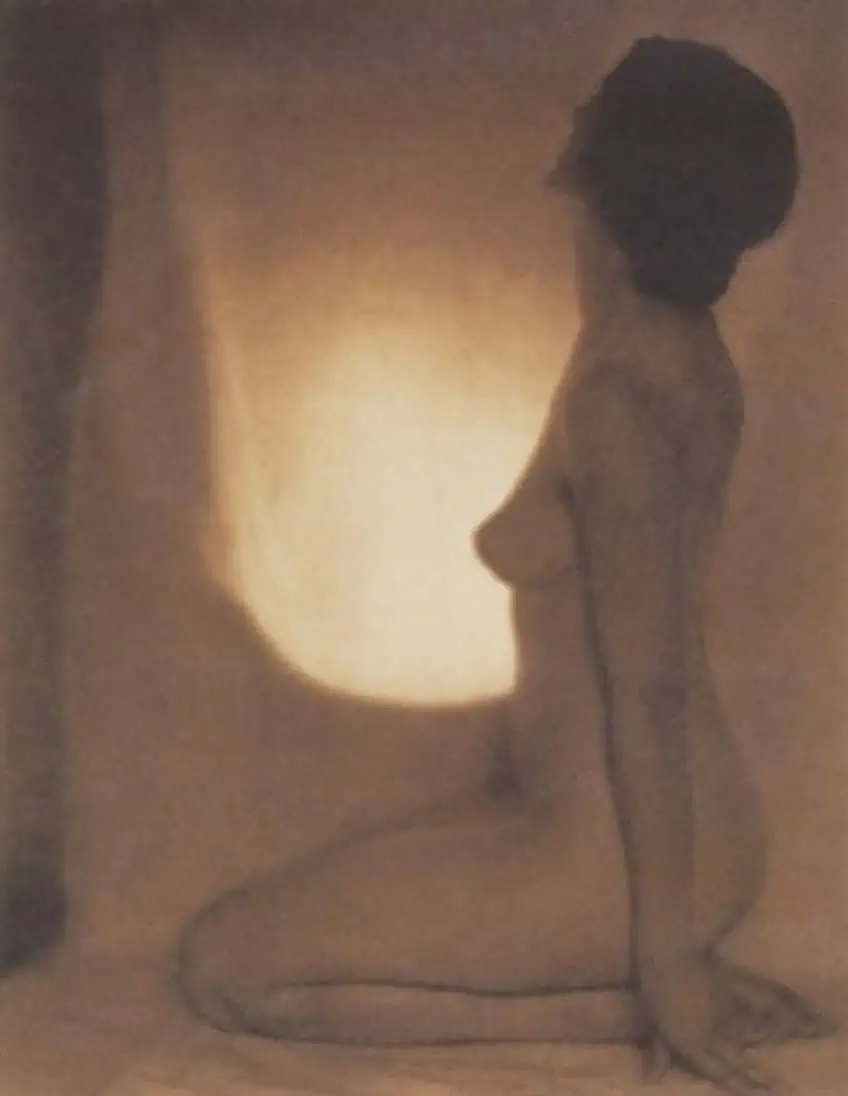
Auguste Belloc (1805 – 1867)
| Name | Auguste Belloc |
| Date of Birth | 7 September 1805 |
| Date of Death | 1867 |
| Nationality | French |
| Associated Movements, Themes, and Styles | Eroticism, nudity, nude art, documentary photography, and portraiture |
| Medium | Photography and painting |
| Famous Artworks | ● Female Nude on Chaise Lounge (c. 1850s) ● Nude Standing by Bed (1854) ● Female Nude (1855) |
Auguste Belloc was one of the most popular nude women photography pioneers of the 20th century, who was best known for his works in documentary and portraiture photography. His works were admired for their great attention to detail and his ability to document the working class of France during the early 20th century. The majority of Belloc’s portraiture features interesting personalities that illustrate a unique kind of spontaneity that the artist could bring to the genre of portraiture photography. In addition to exploring documentary photography and Realism through the struggles of the working class, Belloc also briefly explored nude photography during the early Avant-Garde movement. During the late-19th and early 20th centuries, nudity in art, and especially nude photography, were regarded as scandalous and seen as controversial in the public eye. Many of his nude photographs reflect the male gaze of the late-19th century, as portrayed by images of naked women in intimate bedroom scenes.
Among his most famous nude photographs include Female Nude on Chaise Lounge (c. 1850s) and Nude Standing by Bed (1854).
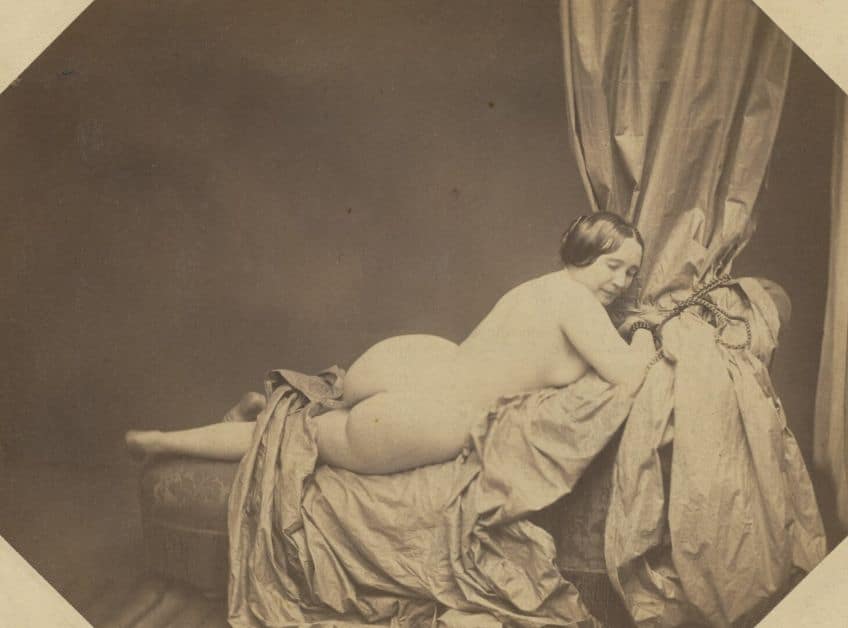
Oscar Rejlander (1813 – 1875)
| Name | Oscar Gustave Rejlander |
| Date of Birth | 19 October 1813 |
| Date of Death | 18 January 1875 |
| Nationality | British |
| Associated Movements, Themes, and Styles | Victorian art, Victorian photography, photomontage, printmaking, and portraiture |
| Medium | Photography |
| Famous Artworks | ● The Two Ways of Life (1857) ● Portrait of Alfred Tennyson, 1st Baron Tennyson (1862) ● Happy Days (1872) |
Oscar Rejlander was one of the pioneering figures of early photography and science in the 19th century. He is best known as one of the most influential photographers of the century. He quickly gained recognition through his complex compositions in photography and his ability to create a single image using multiple negatives. Rejlander began as a painter but then turned to photography in the mid-19th century. His contributions to photography were considered particularly groundbreaking in the 19th century with his ability to express the true depth of human emotions through portrait photography. Rejlander was one of the earliest nude photographers who explored the use of allegory, vice, and virtue. His most famous work is Two Ways of Life, which consisted of multiple negative photographs combined to narrate a single story and can be considered an early form of Photoshop.
His artistic approach to nude photography combined the concepts of purity and nudity as an artistic device to express sexuality.
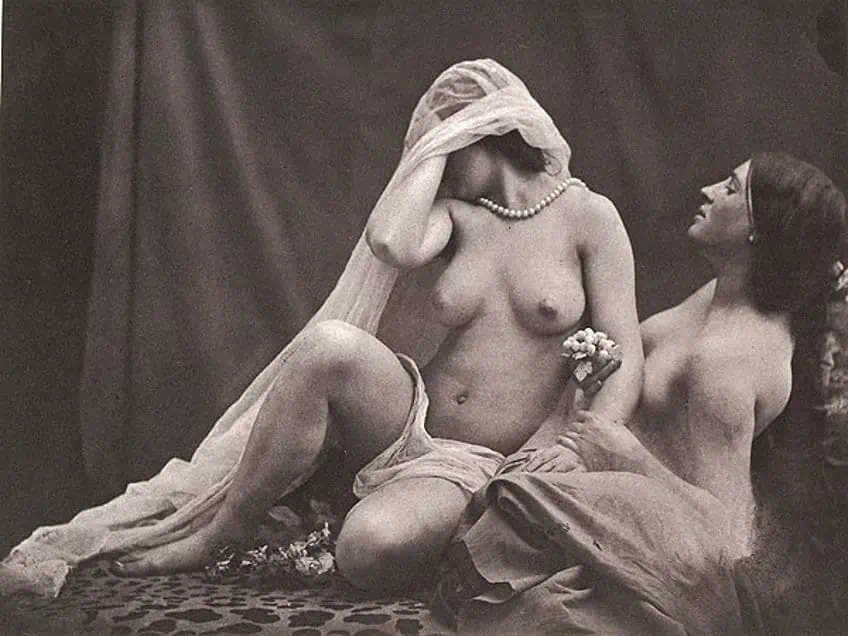
Edward Weston (1886 – 1958)
| Name | Edward Henry Weston |
| Date of Birth | 24 March 1886 |
| Date of Death | 1 January 1958 |
| Nationality | American |
| Associated Movements, Themes, and Styles | Surrealism, Modern photography, still-life, nude art, portraiture, and fine art photography |
| Medium | Photography |
| Famous Artworks | ● Tina on the Azotea (1924) ● Nude (1925) ● Nautilus (1927) ● Pepper No. 30 (1930) ● Charis, Santa Monica (1936) |
Edward Weston was one of the most iconic 20th-century nude women photography practitioners who also championed Surrealist photography. Weston is most famous for pioneering the genre of modernist photography, which included surrealist compositions that emphasize clarity and close-up views of nude women and other striking compositions. Western also integrated abstract compositions. Weston emphasized movement and the dynamics of the human body, which can be seen in many of his nude photographs. The majority of Weston’s nude photography was focused on capturing the essence of women. Weston integrated the use of texture, composition, and form through dramatic lighting and a focus on the curvatures of the body to create sensual images.
Many of his portraits of women capture the essence of their physical appearance and convey additional emotions and moods that reflect his artistic appreciation of feminine beauty.
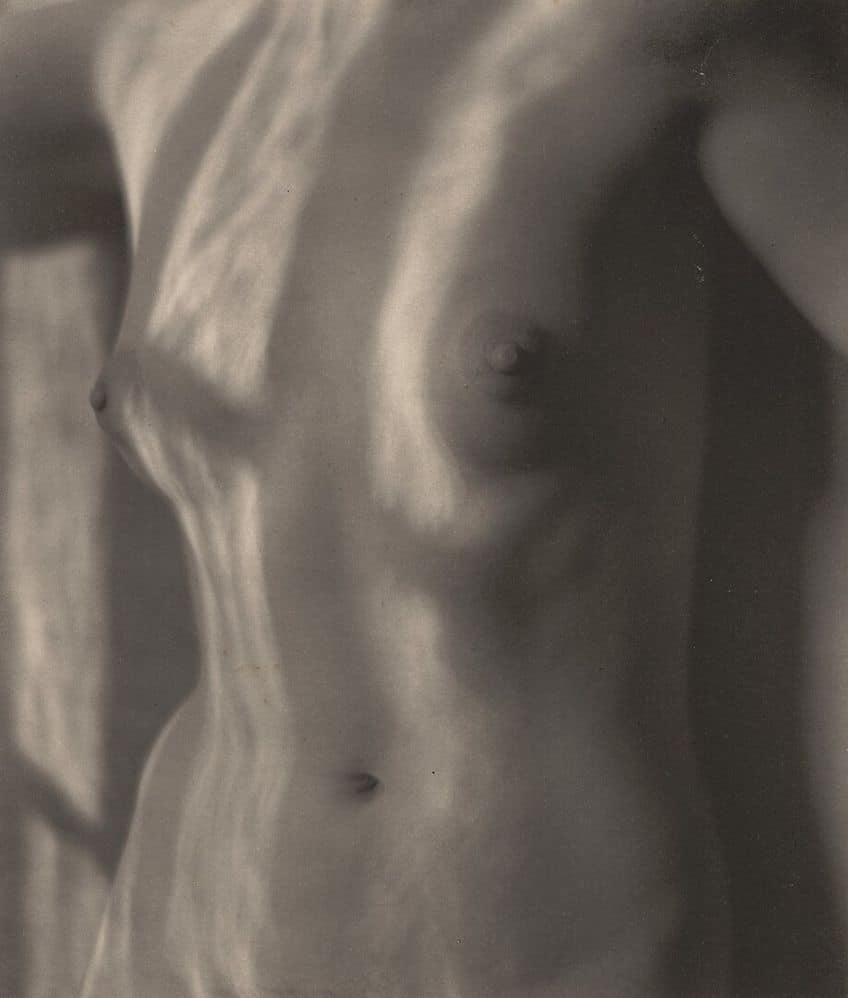
Sasha Stone (1895 – c. 1940)
| Name | Aleksander Steinsapir (professionally known as Sasha Stone) |
| Date of Birth | 1895 |
| Date of Death | c. 1940 |
| Nationality | Russian |
| Associated Movements, Themes, and Styles | Modern art, New Objectivity, photomontage, Surrealism, nude art, fashion photography, portraiture, journalism, property photography, architecture photography, and advertising |
| Medium | Photography |
| Famous Artworks | ● Woman with a Veil (c. 1920 – 1950) ● Nude on a Stool (c. 1920 – 1950) ● Nude with a Bow (c. 1920 – 1950) ● Reclining Nude (c. 1920 – 1950) ● Tribal Woman (c. 1920 – 1950) |
Born Aleksander Steinsapir, Russian photographer Sasha Stone was a leading nude photographer of the 1920s who was also one of the most versatile photographers of the 20th century. Stone was best known for his portraiture, fashion, and editorial photography, which featured high-contrast images that gave his work a dramatic flair. Stone’s work was also considered to be controversial due to the erotic nature of his photographs, which was considered to be unsuitable for certain audiences. Many of Stone’s nude photographs highlight the sensual and erotic qualities of feminine figures by directing his models to pose in bold positions. Other works make use of dramatic devices, such as a single spotlight on the model to create a romantic and dreamlike atmosphere.
Like many vintage nude photographs, Stone’s work focuses on the female body and the male projection of the ideal feminine figure, which was a societal preference in the 1920s.
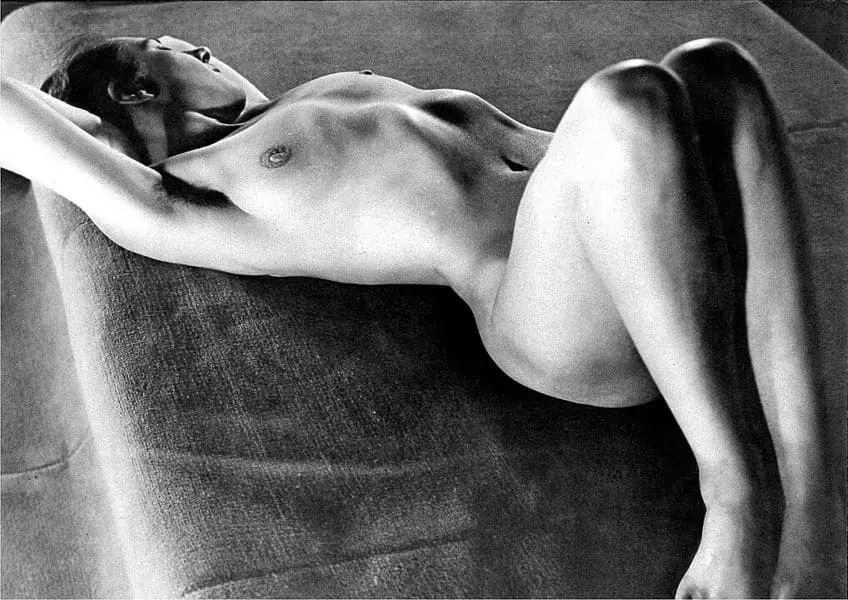
William Mortensen (1897 – 1965)
| Name | William Herbert Mortensen |
| Date of Birth | 27 January 1897 |
| Date of Death | 12 August 1965 |
| Nationality | American |
| Associated Movements, Themes, and Styles | American Glamor, Modern art, Hollywood Glamor, and Pictorialism |
| Medium | Photography |
| Famous Artworks | ● The Unbeliever (1925) ● The Magic Circle (1928) ● The Eternal Flame (1929) ● The Temptress (1930) ● The Adventuress (1932) |
William Mortensen was one of the most controversial and complex conceptual nude photographers of the Modern era who was an expert in presenting the uncanny as beautiful while evoking fantastical erotic images through dramatic lighting, elaborate composition, and meticulous attention to the beauty of the human body. Mortensen’s work was often characterized by his exploration of the grotesque and his ability to distort and exaggerate the expression of human emotion. His work was primarily controversial due to his rejection of conventional photography aesthetics, which were dismissed by many critics during his tenure.
According to contemporary art critics, his works are considered to be particularly contemporary considering the majority of his work was created in the 20th century.
His works have also been compared to other prominent photographers of the Modern era such as Joel-Peter Witkin and Cindy Sherman. What made Mortensen’s work so unique at the time, as compared to other photographers of the 20th century, was that his images were focused on the artificial nature of an image. He also sought to identify the nude form through a Romantic lens, which further emphasized the image as a constructed object. Mortensen was also highly influenced by his previous career in Hollywood, where he worked as a special effects artist and photographer, which informed his fine art photography and exploration of nudity.
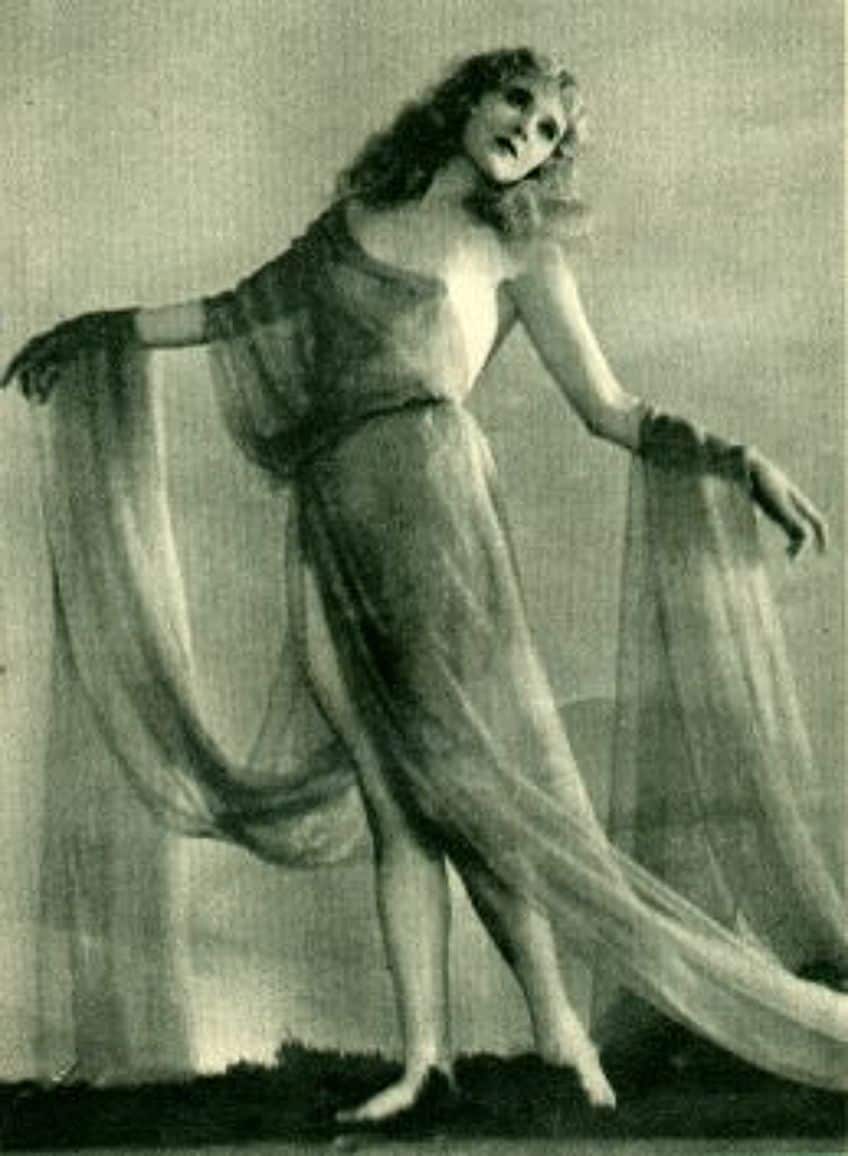
Germaine Krull (1897 – 1985)
| Name | Germaine Luise Krull |
| Date of Birth | 29 November 1897 |
| Date of Death | 31 July 1985 |
| Nationality | German |
| Associated Movements, Themes, and Styles | Modern art, nude art, Avant-Garde, photomontage, photojournalism, urban environment, documentary photography, and landscapes |
| Medium | Photography |
| Famous Artworks | ● Nudes (1924) ● Nu féminin (Female nude) (1928) ● Nude (c. 1928 – 1929) ● Études de nu (1930) |
Germaine Krull was one of the most famous Avant-Garde nude photographers of the 20th century who was best recognized for her contribution to documentary photography. Krull’s artistic career was characterized by her exploration of concepts that were considered controversial at the time and revolved around political ideologies and other issues related to social inequality and gender. Krull was also considered to be an experimental artist who played around with double exposure and Avant-Garde photomontage techniques. This made her one of the most important female photographers of the early 20th century. Krull’s approach to her photographic practice included her philosophy that photography was not simply a tool to deceive viewers or manipulate the subject, rather, photography was a witness and a tool for providing evidence.
Krull’s depiction of the female nude presents women in a variety of contemporary settings, which demonstrates an alternative view of women in nude art as compared to the popular Hollywood Glamour approach used by many other famous nude photographers at the time.
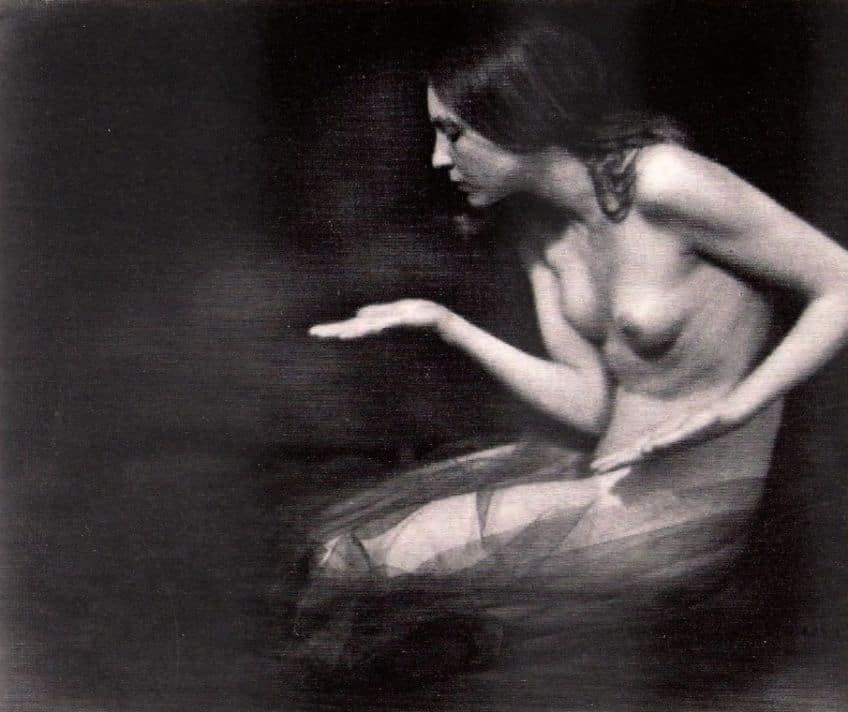
Ruth Bernhard (1905 – 2006)
| Name | Ruth Bernhard |
| Date of Birth | 14 October 1905 |
| Date of Death | 18 December 2006 |
| Nationality | German-American |
| Associated Movements, Themes, and Styles | Nude photography, Modern art, and Contemporary art, |
| Medium | Photography |
| Famous Artworks | ● Triangles (1946) ● Abstract Torso (1947) ● At the Pool (1949) ● In the Box-Horizontal, San Francisco, California (1962) ● Two Forms (1963) ● Balancing (1971) |
Ruth Bernhard was one of the most famous American photographers of the 20th century. Bernhard was renowned for her practice in still-life photography as well as landscape art and black-and-white photography. Bernhard is one of the few female photographers to achieve a high level of recognition within the fine art photography realm, which is often dominated by male artists. Bernhard was born in 1905 in Berlin and later moved to the United States around 1927, where she settled in New York. Bernhard took up a career in photography and worked as an assistant to Ralph Steiner and Paul Strand. Thereafter, she relocated to California to continue working on her Minimalist style while exploring the human figure.
As a nude photographer, Bernhard’s art style demonstrates her fascination with the human form through techniques that emphasize precision and grace.
She also places her models against stock white backgrounds to draw out the contours of the body and highlight her interest in the play between shadow and light. The models in her nude photographs are often included in simple compositions and elegant poses in such a way that is both respectful and sensual without objectifying her models. Throughout her tenure, Bernhard achieved many awards and accolades, including a Lifetime Achievement award and the Guggenheim Fellowship. Today, her works can be found in many prestigious museums, including the San Francisco Museum of Modern Art, the Museum of Modern Art, and the Metropolitan Museum of Art.
Horst P. Horst (1906 – 1999)
| Name | Horst Paul Albert Bohrmann |
| Date of Birth | 14 August 1906 |
| Date of Death | 18 November 1999 |
| Nationality | German-American |
| Associated Movements, Themes, and Styles | Modern art, fashion photography, post-war art, nude photography, Hollywood Glamour, and portraiture |
| Medium | Photography |
| Famous Artworks | ● Helen Bennett, Paris (1936) ● Waxed Beauty, New York (1938) ● Lisa on Silk I, New York (1940) ● Male Nude I (1952) ● Male Nude (Hands Behind Back), New York (1952) ● Male Nude (Frontal), New York (1952) ● Triangles: Male Nude, New York (1952) |
Horst P. Horst, also known as Horst Paul Albert Bohrmann, was one of the most famous nude male photographers of his time. Horst was best remembered for his elegant American Glamour approach to black-and-white portraiture photography, which gained him significant recognition across the fashion and entertainment industries. Horst was also incredibly talented at creating artistic nude compositions of nude male models and nude female models in a variety of sensual and sexually suggestive ways. He has worked with many prominent cultural figures, including Salvador Dalí and Coco Chanel while producing classical and dramatic imagery in his nude photography series. One of the key strengths of Horst’s nude photography series was his ability to inspire timeless beauty. Horst also displayed his talent for evoking a sense of Grecian beauty by including classical elements such as Greek drapery and columns for an added sense of elegance and antiquity.
Some of Horst’s best nude photographs include Waxed Beauty, New York (1938), and Male Nude I (1952).
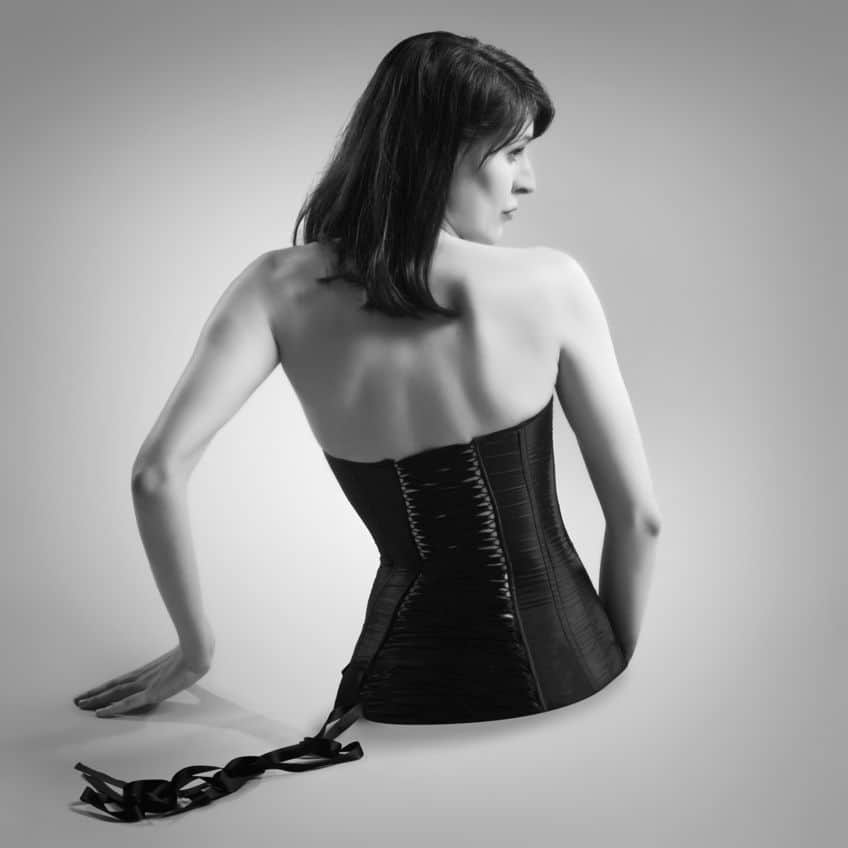
Shōji Ueda (1913 – 2000)
| Name | Shōji Ueda |
| Date of Birth | 27 March 1913 |
| Date of Death | 4 July 2000 |
| Nationality | Japanese |
| Associated Movements, Themes, and Styles | Modern art, Realism, Surrealism, cinematic, and landscapes |
| Medium | Photography |
| Famous Artworks | ● Nude (1950) ● Nude on the Dune (1950) ● Nude in the Dunes (1950) ● Nude, Tottori Prefecture, Sakai machi (1951) |
Shōji Ueda was first and foremost a modernist photographer whose practice revolved around scenes from everyday life in Sakaiminato in the Tottori Prefecture of Japan. Ueda first began his photography career working as a commercial photographer and thereafter began experimenting with the use of light through whimsical compositions and strong contrasts. Ueda is most famous for his series Sand Dunes (c. 1940 – 1970) as well as landscape photography featuring images of people in their natural environment. As one of the pioneering photographers of Japanese photography, Ueda was admired for his innovative approach to capturing the beauty of the mundane. His brief exploration of nudity in photography was captured in his Sand Dunes series in the 1950s and is reminiscent of surrealist influences.
Some of his most famous nude photographs include Nude in the Dunes (1950) and Nude, Tottori Prefecture, Sakai machi (1951).
Robert Heinecken (1931 – 2006)
| Name | Robert Heinecken |
| Date of Birth | 29 October 1931 |
| Date of Death | 19 May 2006 |
| Nationality | American |
| Associated Movements, Themes, and Styles | Modern art and nude photography |
| Medium | Photography |
| Famous Artworks | ● Are You Rea #3 (1964) ● Focal Point (1970) ● TV Network Newswoman (Woman on Beach) (1977) ● Woman with Red Scare (1979) |
Robert Heinecken was among the most famous 20th-century nude male photographers whose unconventional approach to the medium and artistic composition places him as one of the most experimental nude artists. Heinecken aimed at using provocative compositions to explore sexuality through collage and mixed-media artworks that capture not only the human body but the appropriation of different models presented by common print media. The American artist’s representation of women in his nude photography series also explores the boundaries between reality and representation through a combination of abstract and surreal visual languages.
Among his many famous images that tackle the above themes include TV Network Newswoman (1977) and Lessons in Posing Subjects #6, Male Nude (c. 1981).
Nobuyoshi Araki (1940 – Present)
| Name | Nobuyoshi Araki (also known as Arākii) |
| Date of Birth | 25 May 1940 |
| Date of Death | Present |
| Nationality | Japanese |
| Associated Movements, Themes, and Styles | Contemporary art, nude photography, bondage, and eroticism |
| Medium | Photography |
| Famous Artworks | ● Tokyo novelle (1995) ● Untitled, from the Bondange Series (1997) ● Yakuza (1997) ● Polaroid (2000) ● Winter Love #8 (2004) ● Kimbaku (67 shooting back) (2007) |
Nobuyoshi Araki, who is also recognized as Arākii, is one of the world’s leading Japanese nude photographers of the Contemporary decade. Araki is considered to be both a controversial figure and a celebrated artist of Japan who is most famous for his fine art photography that explores the world of bondage through the erotic landscape of the body. Many of his works are also considered to be highly controversial due to their provocative nature, which is defined by the explicit portrayal of women. Araki’s nude photography has also been criticized for his alleged exploitation of his models in which some art critics accuse the artist of fetishizing women. Due to his many fans and growing international popularity, Araki’s highly-stylized nude photography is a demonstration of his spontaneity as a photographer and his talent for improvisation. His works are also excellent examples of challenging traditional ideas of feminine beauty.
On the other hand, his works still cater to a niche genre of BDSM, and bondage as seen through the male gaze accused nude photography is still somewhat of a debate for Contemporary critics.
Nan Goldin (1953 – Present)
| Name | Nancy Goldin |
| Date of Birth | 12 September 1953 |
| Date of Death | Present |
| Nationality | American |
| Associated Movements, Themes, and Styles | Modern art, Contemporary art, LGBT subcultures, HIV/AIDS, the opioid crisis, connection, gender, sexuality, nude photography, and portraiture |
| Medium | Photography |
| Famous Artworks | ● Brian on the Bed, NYC (1983) ● Self-Portrait in Kimono, NYC (1983) ● Nan One Month After Being Battered (1984) ● Misty and Jimmy Paulette in a Taxi, NYC (1991) ● Suzanne in the Bathroom, N.Y.C. (1992) |
Nan Goldin is a prolific American fine art photographer who is celebrated for her work on documenting the intimacy and close relationships of individuals in the LGBTQ+ community, especially during the HIV/AIDS crisis. Goldin studied at the School of the Museum of Fine Arts in Boston in the 1970s and later developed her photographic style by depicting the lives of individuals from marginalized societies in the late 20th century in New York City. The raw nature of her photography earned her widespread recognition, which expresses moments of vulnerability, love, pain, and blunt honesty. Her best-known series is The Ballad of Sexual Dependency, which began in the 1970s and documents the life of her friends as well as herself through various touching and intimate moments.
As an active member of the LGBTQ+ community and an advocate for AIDS-related issues, Goldin has become one of the most prolific artists of the modern period and established herself as one of the most influential photographers of the 1970s.
When looking at Goldin’s style of nude photography, one can easily admire her unflinching approach to depicting sexuality and vulnerability. Her ability to evoke pure emotional honesty and a sense of empathy in her photography is one to be admired and is not often seen in traditional photographs of nude figures. Nude photographs range from explicitly sexual to compassionate and evoke a sense of humanity. Goldin’s ability to also draw out a sense of connection through various photographic techniques helps the viewer to connect with the subject and develop an appreciation for the tender moments that one can share with their friends or lovers.
Francesca Woodman (1958 – 1981)
| Name | Francesca Stern Woodman |
| Date of Birth | 3 April 1958 |
| Date of Death | 19 January 1981 |
| Nationality | American |
| Associated Movements, Themes, and Styles | Modern art, portraiture, self-portraits, nude photography, and black-and-white photography |
| Medium | Photography |
| Famous Artworks | ● Early 1972 – 1975, E03 (1972) ● Untitled (1972 – 1975) ● Me and My Roommate (1976) ● Untitled (from Swan Song Series), Providence, Rhode Island (1978) ● Self Portrait (1979) |
Francesca Woodman was one of the most famous American photographers who often portrayed herself in many of her nude photographs. Photography is described as highly experimental and explores themes such as gender identity, sexuality, and the feminine body. Woodman’s style of photography includes the use of long exposure and mirrors, which help create a sense of distortion in her nude photographs. Her work also plays with the idea of ambiguity by making use of the contrasts between light and dark. While using her own body as the tool for her expression, she also evokes ethereal states of being and includes the use of other materials such as paint, tape, and textiles.
One can also describe Woodman’s nude photography as incredibly thought-provoking as she tackles complex issues of the self and identity. Her journey of self-discovery and self-awareness of her body is also what helps make her art emotionally profound.
Pascal Baetens (1963 – Present)
| Name | Pascal Baetens |
| Date of Birth | 20 July 1963 |
| Date of Death | Present |
| Nationality | Belgian |
| Associated Movements, Themes, and Styles | Contemporary art, nude photography, portraiture, travel photography, the body, and narrative photography |
| Medium | Photography |
| Famous Artworks | ● Requiem for the Innocent Soul (2010) ● The Stories Project (n.d. – Present) |
Belgium-based nude photographer Pascal Baetens is one of the most famous nude photography practitioners whose eye for expressing the visual language of the nude body has been expertly rendered in images published by many Modern photography books. The globally-renowned photographer specializes in photographing women and other individuals from different cultures and countries, including North America, Europe, and Asia. Baeten does not simply photograph images of nude women for commercial purposes, rather, he brings to light the intimate and complex stories of women around the world who have stories to tell that relate to their bodies and unique journeys.
Baetens has also written books on nude photography and the art of photographing nude models to create compelling artistic compositions.
John Rankin (1966 – Present)
| Name | John Rankin Waddell |
| Date of Birth | 1966 |
| Date of Death | Present |
| Nationality | British |
| Associated Movements, Themes, and Styles | Contemporary art, celebrity portraiture, entertainment photography, portraiture, hyper-sexuality, and nude photography |
| Medium | Photography |
| Famous Artworks | ● Elle Macpherson, London (1994) ● Heidi Klum, London (2001) ● Kate Moss, London (2006) ● Daphne Guinness, London (2011) ● Tulisa Contostavlos, London (2012) |
John Rankin is a popular British fashion photographer who is most famously recognized as “Rankin” in the fashion and entertainment industry. Rankin’s nude photography challenged the traditional societal notions of propriety, Well. Evoking a sense of beauty through esthetically pleasing and provocative nude photographs. Many of the models in his nude photographs are cast in bold lighting and unusually staged positions that make his approach one of the most unique styles in British nude photography.
Rankin plays on the idea of eliciting a sense of drama and intrigue from his nude photographs.
Many of his photographs also feature close-ups of his model’s bodies and focus on the contours of the model’s skin. Through this approach, Rankin invites his audience to engage with the model and the aesthetic quality of the image from a deeply visceral level. While some of his works are still regarded as controversial, many cannot ignore the power and impact of his vision when presenting celebrities in a brilliant play between color and contrast to highlight the depth of prominent figures.
Spencer Tunick (1967 – Present)
| Name | Spencer Tunick |
| Date of Birth | 1 January 1967 |
| Date of Death | Present |
| Nationality | American |
| Associated Movements, Themes, and Styles | Contemporary art, large-scale nude photography, and human installations |
| Medium | Photography and installation |
| Famous Artworks | ● Pennsylvania (1998) ● Eduardo VII (Lisbon) (2000) ● Alley (2002) ● Newcastle Gateshead 5 (Baltic Centre for Contemporary Art) (2005) |
Spencer Tunick is perhaps the most famous nude photographer in the United States and is most famous for organizing massive human installations featuring various nude individuals grouped in specific ways. His Surrealist approach to nude art also poses questions about societal issues such as privacy and conformity in the 21st century. His work in nude photography began in the 1990s and has since tested the boundaries of installation and nude photography through numerous intricate compositions. Tunick’s works feature up to thousands of models who are more than happy to have their bodies displayed in the open.
The nude art photographer is currently based in New York City and remains an iconic legend in nude art.
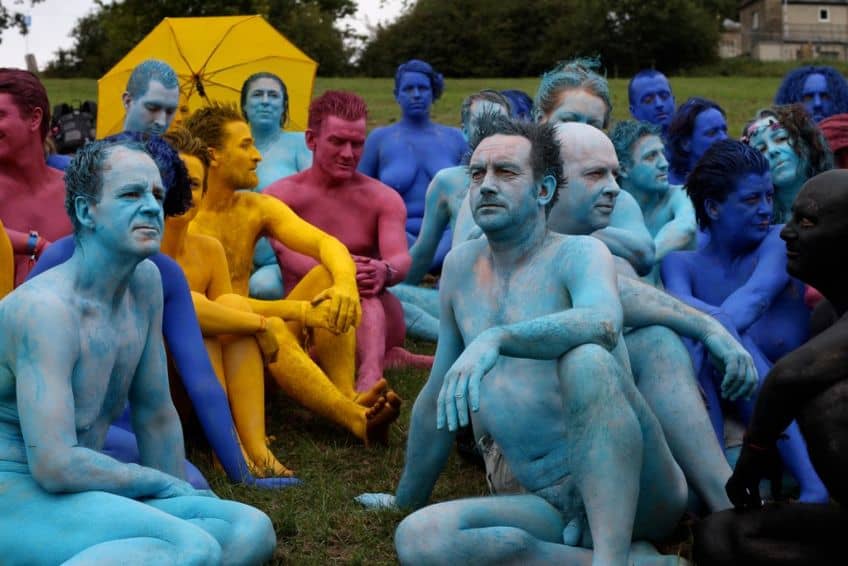
Rebeca Saray (1983 – Present)
| Name | Rebeca Saray |
| Date of Birth | 1 April 1983 |
| Date of Death | Present |
| Nationality | Spanish |
| Associated Movements, Themes, and Styles | Contemporary art, nude art, and fine art photography |
| Medium | Photography, digital art, and filmmaking |
| Famous Artworks | ● Fallen Soul (2021) ● Embrace Your Destiny (2021) ● Get Out (2021) ● In Your Skin (2021) |
Madrid-based artist Rebeca Saray is one of the most famous nude model photographers of the Contemporary period who has collaborated with many famous figures and clients such as Air Europa and Warner Music. Saray’s artistic nude photography features digitally manipulated images using Photoshop and other editing software to create conceptually profound and visually intriguing photographs that highlight the body through a narrative framework.
Saray’s imaginative nude photography style is a unique fusion of reality and fantasy that demonstrates her mastery over lighting, color, and composition that captures the viewer’s attention while alluding to an emotive mythological context.
Sophie Harris-Taylor (1988 – Present)
| Name | Sophie Harris-Taylor |
| Date of Birth | 1988 |
| Date of Death | Present |
| Nationality | British |
| Associated Movements, Themes, and Styles | Contemporary art, portraiture, fine art photography, mental health, body image, and identity |
| Medium | Photography |
| Famous Artworks | ● Slight Wounds (n.d.) |
Multi-award-winning British photographer Sophie Harris-Taylor is one of the leading fine art and nude photographers of the 21st century. Taylor graduated from London Kingston University and thereafter went on to collaborate with many leading publications, including Vogue, Harper’s Bazaar, and The Sunday Times on various photographic initiatives. Her practice explores themes related to mental health and body image while unpacking identity through portraiture. Taylor’s series, Slight Wounds, explores the breakdown of societal notions of the ideal body image through a modern lens that mimics classical beauty through its appreciation of scars and epidermal flaws. In photographing nude women, photography becomes a tool for appreciation and reframing beauty through a focus on women in classical poses without their identities being revealed.
Her artistic nude photographs highlight the beauty of imperfection, and as such shed light on the beauty that already exists in the human body without glamorizing superficial aesthetics.
Harley Weir (1988 – Present)
| Name | Harley Weir |
| Date of Birth | 1988 |
| Date of Death | Present |
| Nationality | English |
| Associated Movements, Themes, and Styles | Contemporary art, fashion photography, fine art photography, nude photography, women, femininity, the body, and sexuality |
| Medium | Photography |
| Famous Artworks | ● Untitled (2015) ● Bodies in Urban Spaces (2016) ● A Horse is Not a Metaphor (2017) ● Maiolica (2019) ● Silent Partner (2020) |
Harley Weir is one of the most well-known London-based nude photographers who also specialized in fashion and fine art photography. Weir’s career in nude photography spiked after she released a self-portrait series on Instagram exploring the sexual appeal of sex dolls. Her work is often described as existing between the grotesque and the sensual. Her recent series of self-portraits published in 2022 showcase Weir embodying the artificial nature of a sex doll through an uncanny mask crafted from hyperreal rubber, which blurred out her natural features and presented herself as though she were a plastic barbie doll. Her work highlights the pantomime feminine as contrasted to Modern beauty, which advocates for the real and further emphasizes the artist’s belief in a philosophical statement by French philosopher George Batailles that there is only one truth – and that is a violent contradiction. Weir’s use of nudity and exploration of sexuality, desirability, and hyper-sexualization makes her work not only profound in its appeal to the Contemporary digital age where beauty is intertwined with digital manipulation and photographic editing but also in that it points out the danger in our attraction and desire for anything but human.
It is both an expansion of the human aesthetic that also alienates itself.
Dave Lucas (n.d. – Present)
| Name | Dave Lucas |
| Date of Birth | Unavailable |
| Date of Death | Present |
| Nationality | American |
| Associated Movements, Themes, and Styles | Contemporary art, editorial photography, commercial photography, lifestyle, portraiture, nude photography, and model photography |
| Medium | Photography |
| Famous Artworks | ● Inkd Barbie (2019) ● Dezire project (2019) ● MOLL magazine shoot (2019) ● Glamouria magazine shoot (2019) |
Dave Lucas is one of the most famous editorial and nude model photographers who is currently based in Los Angeles, California. Lucas also specialized in lifestyle and commercial photography and is best known for his collaborative work with many musicians, models, and celebrities. Lucas has also collaborated with many prominent brands and publications including Rolling Stone and Nike. Additionally, Lucas has also won many awards for his photographic contributions, including awards such as the Cleveland Arts Prize Emerging Artist Award in 2016 and the Ohio Poet Laureate in 2018 and 2019. His best nude artworks include his boudoir and nude photography series that features many famous nude photographs of women.
Lucas has also worked with magazines such as Dezire and Inkd Barbie, where his photographs can also be viewed.
Denisse Ariana Pérez (n.d. – Present)
| Name | Denisse Ariana Pérez |
| Date of Birth | Unavailable |
| Date of Death | Present |
| Nationality | Mexican |
| Associated Movements, Themes, and Styles | Contemporary art, film photography, landscape, portraiture, street still-life, still-life, editorial photography, and lifestyle photography |
| Medium | Photography |
| Famous Artworks | ● Agua (n.d.) ● Asket I (n.d.) ● Suits (n.d.) ● Albinism, Albinism (n.d.) |
Denisse Ariana Pérez is among the trending Contemporary nude model photographers who work primarily with film photography, including landscapes, portraiture, and lifestyle photography. The Mexican artist is based in Copenhagen, Denmark, and demonstrates her knack for capturing authentic moments through her nude photography. Her work has been featured in many lifestyle and fashion publications along with her many accolades and achievements, including the 2020 BarTur Award. Pérez’s famous nude photographs include her collaboration with the Swedish brand Asket where she skillfully captures artistic nude photographs of women modeling the brand’s fashion items.
While the conceptual and artistic value of nude photography is still a hot topic of debate in the art world, one can still appreciate the value that nudity brings to the production and understanding of art. Nude photography holds the power to unpack impactful themes that everyone can find meaning in and include the complex nature of vulnerability, sexuality, beauty, and identity, which offer multifaceted ways of understanding ourselves. We hope that in exploring the nature of nude photography through these famous nude photographers, you can begin to develop alternative ways of transforming Contemporary topics about the body into inspirational works of art!
Frequently Asked Questions
What Is Nude Photography in Fine Art?
Nude photography can be defined as a genre of photography aimed at capturing the human body and is often undertaken with artistic intent. The content can range from evocative and erotic, to elegant and controversial. The visual style depends on the photographer’s intention and combination of photographic techniques.
Why Is Nude Photography Controversial?
There are a few reasons why nude photography is considered controversial. The reasons include the potential for nude photography to be viewed as sexually explicit or pornographic, which can be inappropriate to younger viewers. Nude photography can also become controversial when the context in which it is exhibited is not deemed appropriate. Other reasons why nudity in fine art can be problematic include the fact that many male artists and photographers objectify women in art, which reinforces societal standards of beauty.
Who Is the Most Famous Contemporary Nude Photographer?
The most famous Contemporary nude photographer is considered to be Spencer Tunick. Tunick is a New York-based nude photographer who is best known for his large-scale installations featuring up to thousands of nude models arranged in Surreal compositions and photographed in public spaces. Tunick’s photography explores ideas around privacy, social conformity, identity, and the human relationship between the body and the urban environment.
Jordan Anthony is a Cape Town-based film photographer, curator, and arts writer. She holds a Bachelor of Art in Fine Arts from the University of the Witwatersrand, Johannesburg, where she explored themes like healing, identity, dreams, and intuitive creation in her Contemporary art practice. Jordan has collaborated with various local art institutions, including the KZNSA Gallery in Durban, the Turbine Art Fair, and the Wits Art Museum. Her photography focuses on abstract color manipulations, portraiture, candid shots, and urban landscapes. She’s intrigued by philosophy, memory, and esotericism, drawing inspiration from Surrealism, Fluxus, and ancient civilizations, as well as childhood influences and found objects. Jordan is working for artfilemagazine since 2022 and writes blog posts about art history and photography.
Learn more about Jordan Anthony and about us.
Cite this Article
Jordan, Anthony, “Famous Nude Photographers – Nude Art Photography Explored.” artfilemagazine – Your Online Art Source. July 12, 2023. URL: https://artfilemagazine.com/famous-nude-photographers/
Anthony, J. (2023, 12 July). Famous Nude Photographers – Nude Art Photography Explored. artfilemagazine – Your Online Art Source. https://artfilemagazine.com/famous-nude-photographers/
Anthony, Jordan. “Famous Nude Photographers – Nude Art Photography Explored.” artfilemagazine – Your Online Art Source, July 12, 2023. https://artfilemagazine.com/famous-nude-photographers/.


